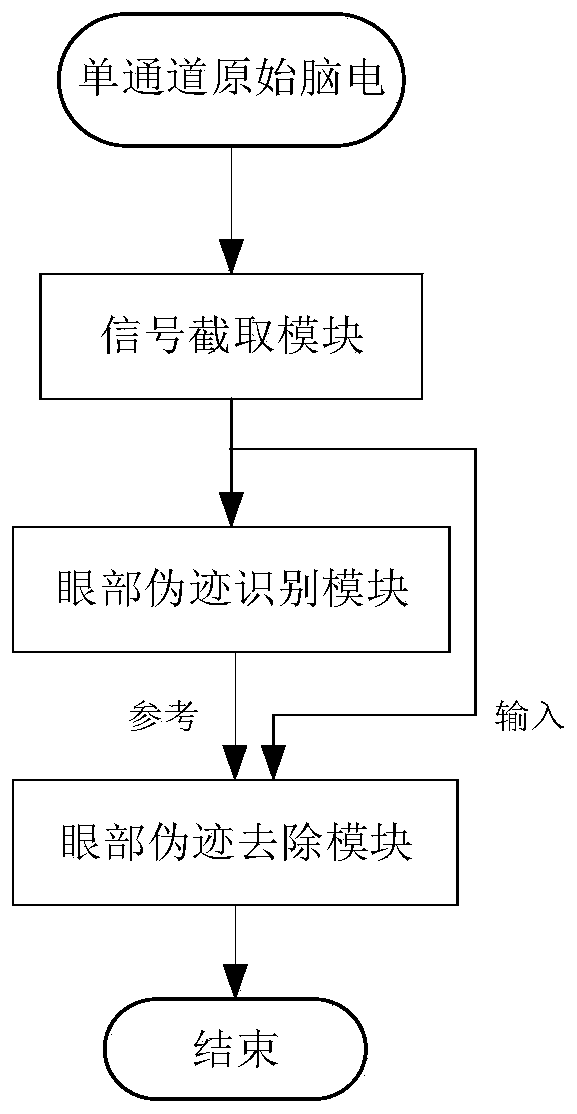System and method for removing ocular artifact from electroencephalogram signal
A technology of EEG signals and artifacts, applied in the field of bioinformatics, can solve problems such as low generalization ability and fixed requirements for the number of EEG channels, and achieve high recognition effect
- Summary
- Abstract
- Description
- Claims
- Application Information
AI Technical Summary
Problems solved by technology
Method used
Image
Examples
Embodiment Construction
[0035] The following is attached figure 1 The present invention will be described in detail.
[0036] Data brief introduction:
[0037] The EEG data comes from DEAP, a multi-modal data set for emotional analysis, which includes EEG signals and other peripheral physiological signals collected when 32 subjects watched 40 one-minute music videos. There are 48 channels, of which channels 1-32 are EEG signals, and channels 33-36 are EEG signals. The data used in this experiment are the signals of the first 36 channels.
[0038] see figure 1 , a system for automatically removing eye artifacts in EEG signals provided by the present invention includes a signal interception module, an eye artifact identification module and an eye artifact removal module connected in sequence, and the original EEG signal is passed through the signal interception module After processing, it is simultaneously sent to the eye artifact recognition module and the eye artifact removal module, and the eye ...
PUM
 Login to View More
Login to View More Abstract
Description
Claims
Application Information
 Login to View More
Login to View More - R&D
- Intellectual Property
- Life Sciences
- Materials
- Tech Scout
- Unparalleled Data Quality
- Higher Quality Content
- 60% Fewer Hallucinations
Browse by: Latest US Patents, China's latest patents, Technical Efficacy Thesaurus, Application Domain, Technology Topic, Popular Technical Reports.
© 2025 PatSnap. All rights reserved.Legal|Privacy policy|Modern Slavery Act Transparency Statement|Sitemap|About US| Contact US: help@patsnap.com



